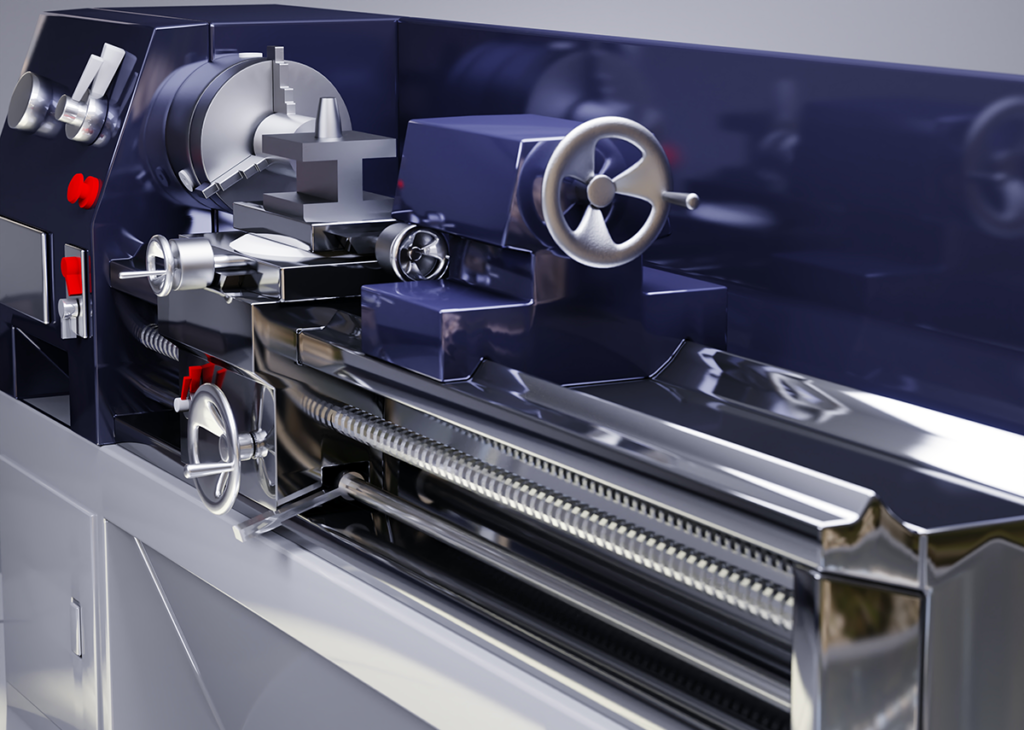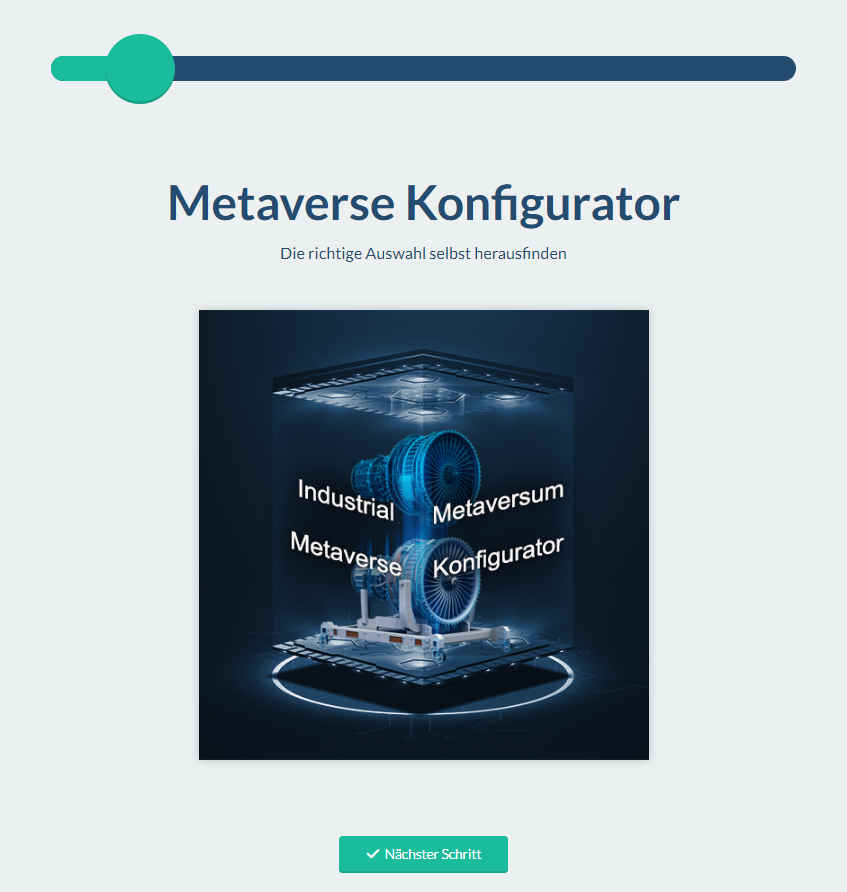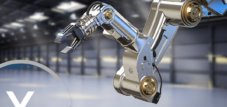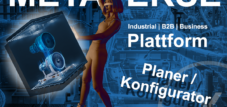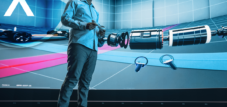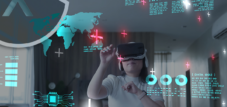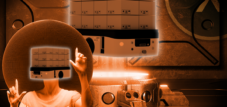Industrial & B2B Business Metaverse: Reduce costs with XR technology for photorealistic product images (XR 3D rendering machine)
Language selection 📢
Published on: June 20, 2023 / update from: June 22, 2023 - Author: Konrad Wolfenstein
The superiority of (Industrial & B2B Business Metaverse) XR technology for photorealistic images
➡️ Media agencies pay dearly for the creation of photorealistic images.
This is often because creating such images requires expertise, specialized software, and resources. In addition, costs can also increase due to the effort involved in working with various professionals such as 3D designers, rendering experts and graphic artists.
XR technology offers a superior solution for creating photorealistic images and allows companies to free themselves from the expensive fees of external media agencies. It is common knowledge that media agencies charge high costs to create such images as it requires expertise, special software and collaboration with various experts.
An alternative is to use your own 'XR-3D rendering machine' to create photo-realistic images from your own 3D / CAD models. This investment enables companies to generate an infinite number of pictures from different positions without relying on external service providers. As a result, costs can be saved in the long term and greater independence can be achieved.
➡️ And the best thing about it is that no prior knowledge is required on the part of the user.
XR technology offers additional benefits. Not only does it enable the creation of photorealistic images, but it is also a step towards your own business metaverse applications without incurring any costs for you. This technology opens up new possibilities for companies to interact, present and collaborate in virtual environments.
Through XR technology for photo-realistic images, companies can use their own '3D rendering machine' and benefit from the advantages of inexpensive image generation. You are not only more independent of external service providers, but are also ready to explore the XR technology for your business applications in the field of industrial, e-commerce and B2B Business Metaverse.
- Lathe in photorealistic representation (3D product presentation)
- Lathe in photorealistic representation (3D product presentation)
➡️ Are you interested in the 'XR-3D rendering machine' alternative that we favor and costly?
What is XR technology?
XR technology stands for Extended Reality and includes virtual reality (VR - Virtual Reality), augmented reality (AR - Augmented Reality) and mixed reality (MR - Mixed Reality). It augments physical reality with computer-generated content and allows users to immerse themselves in immersive and interactive virtual environments.
Virtual Reality (VR – Virtual Reality)
VR creates a fully computer-generated environment that allows users to immerse themselves in a simulated world. Using VR headsets and controllers, users can interact and move around this virtual environment as if they were physically there.
Augmented Reality (AR – Augmented Reality)
AR inserts computer-generated content into the real environment. Using AR glasses, smartphones or tablets, users can see virtual objects or information superimposed on the real world. AR enables expanded perception and interaction with the environment.
Mixed Reality (MR – Mixed Reality)
MR combines elements of VR and AR to achieve a seamless integration of virtual content into the real environment. MR allows users to place and interact with virtual objects in the real world, creating a realistic and immersive experience.
➡️ XR technology has a wide range of applications in various areas such as gaming, entertainment, education, medicine, architecture, industry and more. It allows users to immerse themselves in virtual worlds, visualize 3D models, conduct immersive training, present product designs and create interactive experiences.
➡️ The continued development of XR technology unlocks new features and possibilities to create more realistic and immersive experiences. This includes advanced tracking and gesture recognition technologies, realistic graphics, haptic feedback and improved interaction with the virtual environment.
Special form: The virtual showroom (Virtual Showroom)
The Virtual Showroom is a special form of XR technology.
In the Virtual Showroom, customers can virtually navigate through products, view them from different angles, zoom in on details and, in many cases, even interact with them. This enables a realistic and immersive experience that allows customers to develop a better understanding of the products before making a purchase decision.
The Virtual Showroom offers companies a variety of advantages. On the one hand, they can present their products or services in an innovative and impressive way, which leads to an improved customer experience and higher customer loyalty. Additionally, companies can virtually customize and personalize their products to meet individual customer needs and preferences.
Another advantage of the Virtual Showroom is that it gives companies the opportunity to expand their presence across geographical boundaries. Customers from different parts of the world can visit the Virtual Showroom and explore the products or services without being physically present. This enables global reach and opens up new sales markets.
In addition, companies can use the Virtual Showroom to hold training courses, training environments or virtual trade fairs and events. This saves on travel and booth rental costs while providing an interactive and immersive experience for attendees.
➡️ The Virtual Showroom, with its XR technology, offers an innovative and effective way to showcase products and services, improve customer experience and expand business opportunities. It's a powerful tool to stand out from the competition and delight customers in a new way.
The B2B Business Metaverse vs. Catalogs, Brochures and Brochures - A Superior Product Presentation with 3D
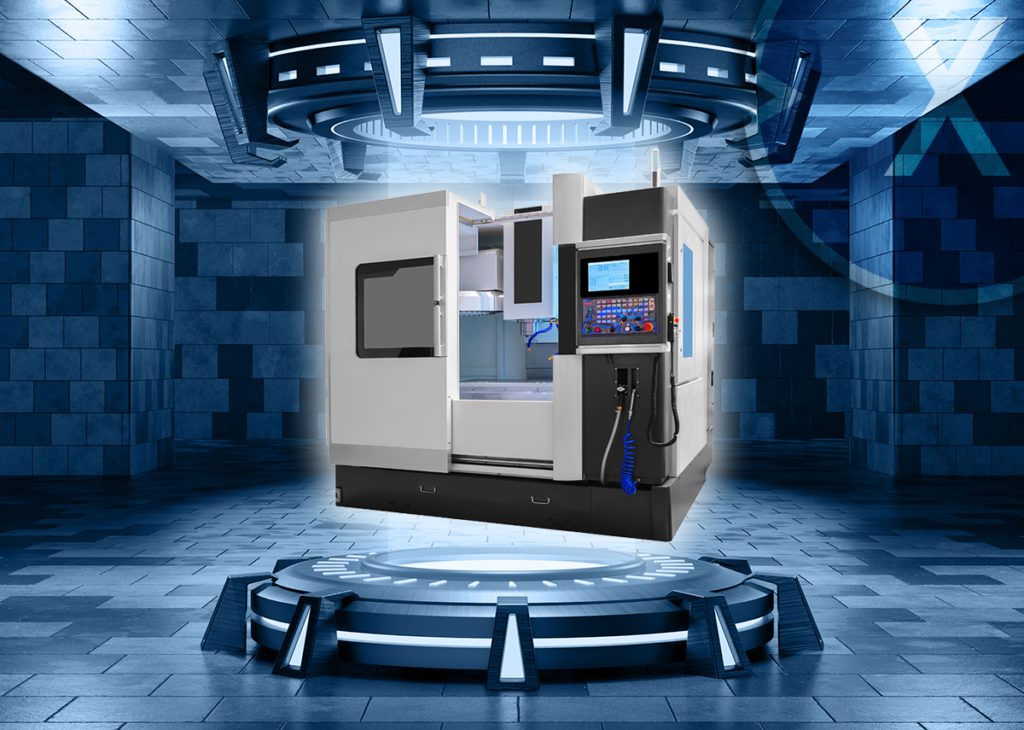
Comparison: The B2B Business Metaverse vs. Catalogs, Brochures and Brochures – A Superior Product Presentation – Image: Xpert.Digital
The B2B Business Metaverse offers superior product presentation compared to traditional catalogs, brochures and leaflets. By using innovative XR technologies, the Metaverse opens up completely new possibilities for visualizing products and presenting information.
Unlike static print media, the Metaverse enables an interactive and immersive experience. Products can be visualized in 3D, giving potential customers a realistic impression of size, shape and functionality. You can view the products from different angles, zoom in on details, and even perform virtual test runs. This immersive presentation creates a deeper understanding and a stronger connection to the products.
More about it here:
Our Industrial Metaverse configurator
Just try out our universally applicable (B2B/Business/Industrial) Metaverse configurator for all CAD / 3D demo options:
Xpert (B2B/Business/Industrial) Metaverse configurator for all CAD / 3D data can be used on all devices, one platform!
Suitable for:
For which industries are photorealistic images particularly important for high-quality product presentations?
Photorealistic images are of great importance for various industries because they enable an appealing and convincing product presentation. Here are some industries where photorealistic images are particularly important for product presentation:
Mechanical engineering and industry
Photorealistic images are particularly important in mechanical engineering because they provide a visual representation of complex machines and industrial products that are often difficult to imagine for potential customers. They support marketing by presenting products in an appealing way and communicating their performance. They also contribute to the industry by improving the design and development process and facilitating communication between engineers, manufacturers and customers.
Architecture and construction industry
Photorealistic images are an important tool for architects, construction companies and real estate developers to present their projects. They allow potential customers to visualize real estate and buildings in realistic quality, even before they are physically built. This helps with marketing projects, customer communication and decision making.
E-commerce and online trading
Images play a crucial role in e-commerce because potential customers cannot physically inspect the products. Photorealistic images allow customers to view the product in high quality and detail. This allows them to get a better idea of appearance, colors, textures and proportions, which increases confidence in the buying process.
Furniture and interior design industry
In this industry, it is important that customers can imagine what furniture and furnishings would look like in their home. Photorealistic images allow customers to visualize the products in different spaces and environments to make better purchasing decisions and ensure that the products meet their needs and aesthetic preferences.
Automotive industry
In the automotive industry, photorealistic images are of great importance for the presentation of vehicles. Potential buyers can view the vehicles' design, details and features in high quality and get a better idea of what the vehicle would look like in reality. This helps capture customer interest and support the sales process.
Fashion and clothing industry
In the fashion industry, visual representations of clothing and accessories are crucial. Photorealistic images allow customers to view products in detail to better assess fabrics, patterns, fit and styling. This allows them to make informed purchasing decisions and increase trust in the brand.
➡️ These industries benefit from photorealistic images as they provide an immersive and realistic experience that allows customers to view products in high quality and get a better idea of what they would look like in reality. This contributes to increasing purchase willingness, customer satisfaction and ultimately business success.
Photorealistic images are particularly important in mechanical engineering, especially in the areas of marketing and industry, for several reasons
Product presentation
Photorealistic images enable mechanical engineering companies to present their products in a visually appealing and convincing manner. Potential customers can see the design, features and quality of the machines in high detail, even if they are not physically available. This makes it easier to communicate product features and benefits.
Understanding complex machines
Mechanical engineering often involves highly complex products where it can be difficult to explain how they work and the added value to potential customers. Photorealistic images make it possible to convey how the machines work in a visually appealing way. This allows customers to gain a better understanding of the functionality and benefits of the machines.
Marketing communications
Photorealistic images are an effective marketing tool to attract the attention of potential customers and increase interest in mechanical engineering products. High-quality images enable engineering companies to showcase their products on websites, brochures, trade shows, and other marketing materials. This helps improve brand perception and engage potential customers.
Industrial applications
In the industrial environment where mechanical engineering systems are used, photorealistic images are of great importance. They can be used to show machines in operation, demonstrate possible application scenarios and help customers visualize the integration of the machines into their own production processes. This makes the purchase decision easier and supports customers in planning and implementation.
competitiveness
Mechanical engineering is a highly competitive industry. Photorealistic images can help to differentiate a company's product range from competitors and convince customers of the quality and reliability of the machines. Through convincing visual representations, mechanical engineering companies can increase their competitiveness and convince potential customers of their products.
➡️ Overall, photorealistic images play a crucial role in mechanical engineering to present products, make complex machines understandable, achieve marketing goals, support industrial applications and strengthen competitiveness. They help gain customer trust and make the sales process more effective.
However, the question remains: Why not take the next step from photorealistic image rendering to your own B2B business metaverse?
The transition from photorealistic image rendering to your own B2B business metaverse offers a variety of advantages and opens up new opportunities for companies. Here are some reasons why taking the next step toward your own business metaverse may make sense:
Interactive presentation
A business metaverse allows companies to present their products and services in an interactive virtual environment. Instead of just showing static images, customers and business partners can navigate, explore products, zoom in on details and interact in an immersive environment. This creates a dynamic and impressive presentation that can increase the engagement and enthusiasm of the target group.
Collaboration and communication
A B2B business metaverse offers the possibility of collaboration and communication in real time. Companies can hold virtual meetings with customers, partners and employees, exchange ideas, obtain feedback and work together on projects. This increases efficiency and productivity and improves collaboration.
Virtual training and training environments
A dedicated business metaverse enables companies to create virtual training and training environments. Employees can be trained in a safe and immersive environment, resulting in better knowledge transfer and skills development. This is particularly useful in industries where hands-on training is difficult or expensive.
Virtual trade fairs and events
Instead of traditional trade fairs, companies can hold virtual trade fairs and events in their own business metaverse. This enables global reach without requiring a physical presence. Customers and business partners can discover products, attend presentations, network and even make virtual purchases. This saves costs while providing an interactive and immersive experience.
Differentiation and innovation
Building your own business metaverse allows companies to stand out from the competition and offer innovative solutions. It shows a pioneering role in the use of new technologies and underlines the commitment to modern and future-oriented thinking. This allows companies to strengthen their brand, attract new customers and remain competitive in the long term.
➡️ It is important to note that transitioning to your own business metaverse requires careful planning, development and implementation. Appropriate resources, expertise and technological infrastructure must be in place to ensure successful implementation. Companies should conduct a comprehensive analysis of their own needs, target groups and market trends in order to make the transition effective.
➡️ Overall, moving from photorealistic image rendering to your own business metaverse offers numerous advantages and opportunities for companies to transform the way they present, communicate and interact with their products. It enables an immersive and innovative business environment that improves customer experience and opens up new growth opportunities.
Which industries are suitable for the B2B business metaverse?
The Business Metaverse offers diverse opportunities for various B2B industries. In particular, industries that offer complex products or services can benefit from the advantages of the metaverse. Here are some examples of industries where the Business Metaverse is particularly suitable:
Mechanical engineering and industry
This industry often produces large, heavy and complex machines. Through the Business Metaverse, these machines can be visualized and presented in impressive 3D quality. Potential customers can explore the machines interactively, view individual components and test functions. The Metaverse enables an immersive experience and supports effective communication of technical details.
Automotive industry
Car manufacturers and suppliers can use the Business Metaverse to showcase their vehicles and technologies. Customers can view the vehicles in 3D, explore various equipment options and take virtual test drives. The Metaverse enables a realistic representation and helps to illustrate innovations and features.
Aerospace
The aerospace industry is characterized by complex and high-tech products. The Business Metaverse enables the visualization of aircraft, satellites and other spacecraft. Potential customers can explore these in 3D, view technical data and simulate various systems. The Metaverse provides an interactive platform to showcase innovations and demonstrate performance.
Construction industry and architecture
In construction and architecture, large construction projects, buildings and infrastructure can be presented in the Business Metaverse. Customers can take virtual tours of buildings, visualize different design options and make changes in real time. The Metaverse facilitates collaboration between architects, builders and customers and enables effective communication about complex construction projects.
Medical and healthcare sectors
The business metaverse also offers interesting application possibilities in the medical sector. Medical devices, prostheses or surgical techniques can be visualized and explained in 3D. This allows for better comprehensibility for healthcare professionals and patients.
➡️ However, the business metaverse is not limited to these industries. In principle, all B2B industries that offer complex products or services can benefit from the advantages of the Metaverse. It creates an interactive, immersive and compelling environment to showcase products, educate customers and drive business deals.
What options are there to convince colleagues and superiors within the company of the fascinating possibilities with a B2B metaverse?
To convince your colleagues and superiors of the fascinating possibilities of a B2B metaverse, you can use the following approaches:
Familiarize yourself with the benefits
Learn more about the benefits of a B2B metaverse and how it can increase efficiency, improve product presentation, and open up new business opportunities. Prepare a list of key benefits you can use during presentations or discussions.
Demonstration of use cases
Collect examples and case studies that show how companies are already successfully using a B2B metaverse. Present these examples to illustrate the practical applications and potential positive impact on business operations.
Present concrete data and statistics
Collect data and statistics that demonstrate how using a B2B metaverse can positively impact business performance. This could, for example, be information about increased sales figures, improved customer satisfaction or increased efficiency.
Organize internal presentations or workshops
Plan presentations or workshops to demonstrate the functionality and possibilities of a B2B metaverse to your colleagues and superiors. Show them live what a product presentation or interactive training can look like in a virtual environment.
Create an immersive experience
Use technology to provide an immersive experience for your colleagues and managers. For example, invite them to a virtual showroom tour or a virtual product presentation. This allows them to experience the potential and fascinating possibilities of a B2B metaverse first hand.
Emphasize competitiveness
Make it clear that using a B2B metaverse can give your company a competitive advantage. Show how other companies in your industry are already successfully using this technology and how your company could benefit from not falling behind the competition.
Offer training and support
Make sure your colleagues and managers receive the necessary training and support to understand and use the technology. For example, offer training or materials that make it easier for you to get started.
Present cost-benefit analyses
Conduct cost-benefit analyzes to show that using a B2B Metaverse makes long-term economic sense. Emphasize how the investment in technology can pay off in improved efficiency, increased productivity, or increased sales.
➡️ Through a convincing presentation, showing concrete benefits and use cases, and providing training.
➡️ If you need support here, please contact us. We are happy to help. One of the strengths of Xpert.Digital is its pioneering business development.
Another solution would be the following intermediate step
Instead of having high-quality pictures for your products in catalogs, brochures and brochures by external media service providers at a high price, you can implement this with an 'XR-3D rendering machine'. By implementing such a technology, you get very close to the implementation of your own industry & business meta -verse solution.
- Lathe in photorealistic representation (3D product presentation)
- Lathe in photorealistic representation (3D product presentation)
More about it here:
By investing in an 'XR-3D rendering machine', you enable yourself to create high-quality images of your products in an efficient and inexpensive process. This machine uses the power of the 3D rendering to generate photo-realistic representations of your products. You can create different views and perspectives and even integrate interactive elements to offer an immersive experience.
By using an 'XR-3D rendering machine', reduce your dependence on external media service providers and at the same time reduce your costs. You have control over the entire process and can react quickly to changes and adjustments. They are also able to generate a large number of product images without causing additional costs.
This intermediate step brings you closer to your own Industry & Business Metaverse solution. With XR technology you can break the boundaries of traditional media and offer your customers an innovative and interactive experience. You can present your products in virtual environments, enable individual configurations and give customers unique insights into your products and services.
By making the move to an XR 3D rendering machine, you are laying the foundation for future developments towards your own Industry & Business Metaverse solution. You will be able to optimize your business processes, strengthen your customer loyalty and stand out from your competitors. It is a step towards innovation and competitiveness in the digital world.
What is Pioneer Business Development?
The concept of the “Pioneer Business Development” refers to the approach of recognizing, developing and introducing innovative business models and technologies at an early stage. It is about taking new ways as a pioneer and securing a competitive advantage by taking the first position in an emerging market or a new industry.
As part of Pioneer Business Development, companies identify trends, technologies or market needs that could play an important role in the future. They rely on their innovative strength, their technical know-how and their entrepreneurial vision to develop innovative solutions that meet the needs of the market.
Pioneer business development often involves an agile and iterative approach in which prototypes, testing phases and continuous feedback play a central role. Companies work closely with customers, partners and other stakeholders to validate and further develop their innovations.
The advantages of Pioneer Business Development lie in the ability to identify and exploit market opportunities at an early stage. By entering the market early, companies can achieve a leading position, better meet customer needs and achieve long-term competitive advantages.
It is important to note that pioneer business development can also involve risks. Early market stages can be uncertain and not all innovations or business models will be successful. Nevertheless, the pursuit of pioneering work enables companies to actively shape the future and position themselves at the top of the competition.
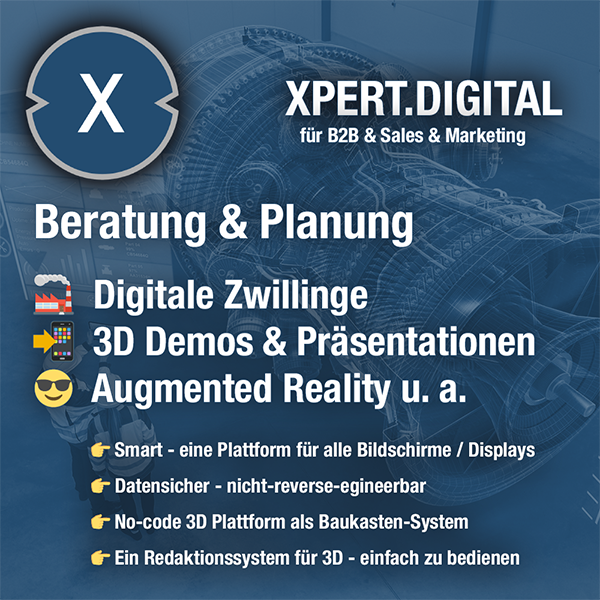
Xpert.Digital – Industry expert in the field of mechanical engineering and digitalization with (Industrial/ E-Commerce/ B2B/ Business) Metaverse
I would be happy to serve as your personal advisor.
You can contact me by filling out the contact form below or simply call me on +49 89 89 674 804 (Munich) .
I'm looking forward to our joint project.
Xpert.Digital – Konrad Wolfenstein
Xpert.Digital is a hub for industry with a focus on digitalization, mechanical engineering, logistics/intralogistics and photovoltaics.
With our 360° business development solution, we support well-known companies from new business to after sales.
Market intelligence, smarketing, marketing automation, content development, PR, mail campaigns, personalized social media and lead nurturing are part of our digital tools.
You can find out more at: www.xpert.digital – www.xpert.solar – www.xpert.plus





